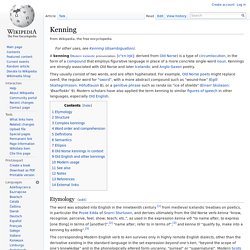

Atonism. Atn Akh Kh(u) N (Akhunaton) Sage Akhunaton was one of the highest sages of Ancient Egypt. Through examination of the teachings which he espoused, it is readily seen that he was a very high spiritual master, and not a heretic as has been postulated by writers and Egyptologists. During his lifetime he reached a level by where he far-surpassed many of his countrymen in spirit matters, thus was able to choose a teaching that was highly esoteric in nature. He was misunderstood due to the abstract nature of the philosophy he chose for the country, not unlike Jesus who was crucified and betrayed by some of his own disciples. This series of lectures outlines the great and marvelous teachings which Sage Akhunaton espoused. How to Watch the Aton Philosophy Video Series: The Videos are arranged in ten minute segments.
For the Benefit of All Beings, Sehu Khepera Ankh. Introduction to Philosophy. Hee meisje. Zundelsite (Zundelsite.org) Kenning. They usually consist of two words, and are often hyphenated.

For example, Old Norse poets might replace sverð, the regular word for “sword”, with a more abstract compound such as “wound-hoe” (Egill Skallagrímsson: Höfuðlausn 8), or a genitive phrase such as randa íss “ice of shields” (Einarr Skúlason: ‘Øxarflokkr’ 9). Modern scholars have also applied the term kenning to similar figures of speech in other languages, especially Old English.
Etymology[edit] The word was adopted into English in the nineteenth century [1] from medieval Icelandic treatises on poetics, in particular the Prose Edda of Snorri Sturluson, and derives ultimately from the Old Norse verb kenna “know, recognise; perceive, feel; show; teach; etc.”, as used in the expression kenna við “to name after; to express [one thing] in terms of [another]”,[2] “name after; refer to in terms of”,[3] and kenna til “qualify by, make into a kenning by adding”.[3] Structure[edit] Complex kennings[edit] Word order and comprehension[edit] LIVING DOLL. They call her the human Barbie, and her emergence is an online phenomenon that only could have manifested in 2012.

Though Valeria Lukyanova had been posting videos of her almost inhuman beauty since November of last year, it was only when Gawker Media site Jezebel discovered the Ukrainian singer on April 22 that a virtual firestorm erupted, her likeness spreading through inboxes and across Twitter with breakneck velocity. The resulting chatter reached a soprano pitch—and with good reason. Her preferred look is so calculated and seemingly artificial that it borders on CGI. “Has Valeria achieved her Mattel-made look through surgery?” Asked the Huffington Post. The truth is that Valeria is very much real, as brought to our attention by a Ukrainian contact who prefers to remain anonymous. V sat down with a translator to ask the self-described “most famous woman of the Russian-speaking Internet” to settle some of the speculation and show us her serious side. Erich Fromm Interview Excerpt 2. The Mike Wallace Interview: Erich Fromm (1958-05-25)
Martin Luther King and Malcolm X Debate. Blacks, Whites and Asians have different ancestors – and did not come from Africa, claims scientist. How the Brain Stops Time. One of the strangest side-effects of intense fear is time dilation, the apparent slowing-down of time. It's a common trope in movies and TV shows, like the memorable scene from The Matrix in which time slows down so dramatically that bullets fired at the hero seem to move at a walking pace. In real life, our perceptions aren't keyed up quite that dramatically, but survivors of life-and-death situations often report that things seem to take longer to happen, objects fall more slowly, and they're capable of complex thoughts in what would normally be the blink of an eye.
Now a research team from Israel reports that not only does time slow down, but that it slows down more for some than for others. Anxious people, they found, experience greater time dilation in response to the same threat stimuli. An intriguing result, and one that raises a more fundamental question: how, exactly, does the brain carry out this remarkable feat? Was it scary enough to generate a sense of time dilation? Why Night Owls Are More Intelligent Than Morning Larks. Some people are night owls, and others are morning larks. What makes the difference may be their levels of general intelligence . Virtually all species in nature , from single-cell organisms to mammals, including humans, exhibit a daily cycle of activity called circadian rhythm .
The circadian rhythm in mammals is regulated by two clusters of nerve cells called the suprachiasmatic nuclei (SCN) in the anterior hypothalamus. Geneticists have by now identified a set of genes that regulate the SCN and thus the circadian rhythm among mammals. However, humans, unlike other mammalian species, have the unique ability, consciously and cognitively, to override their internal biological clock and its rhythmic outputs.
While there are some individual differences in the circadian rhythm, where some individuals are more nocturnal than others, humans are basically a diurnal (day-living) species.